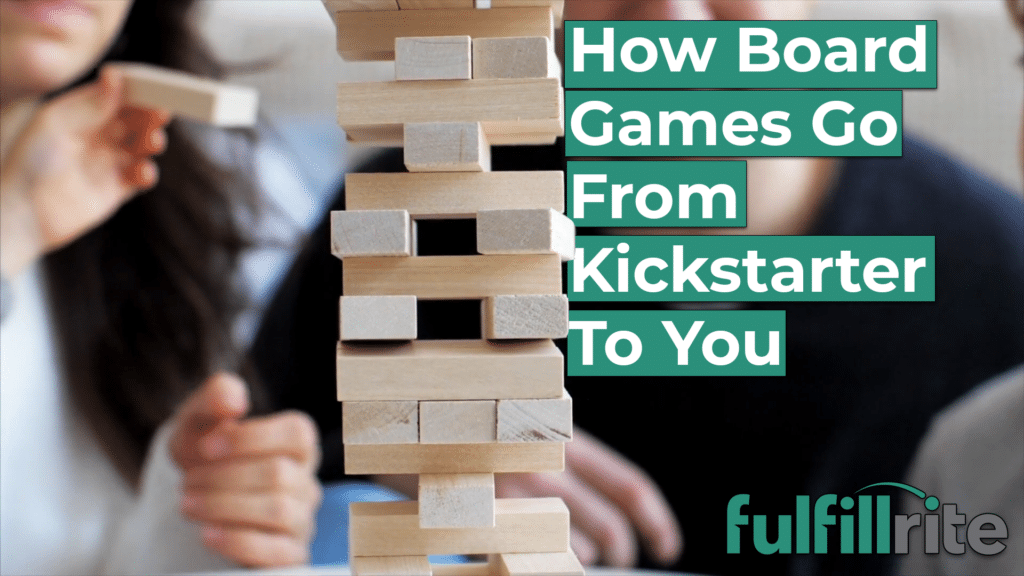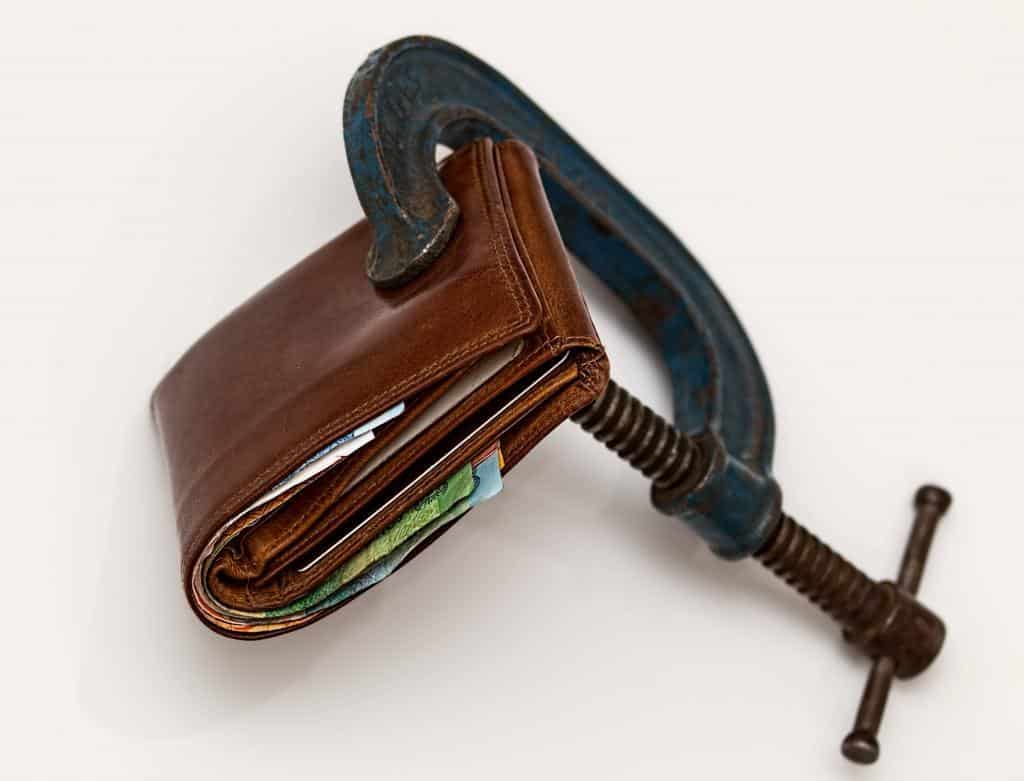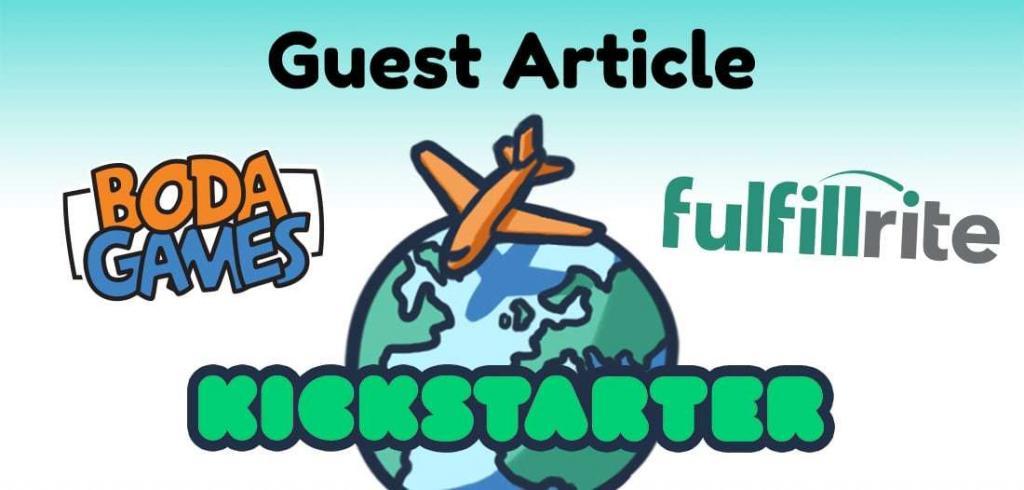This video is brought to you by Fulfillrite.
It’s notoriously tricky to fulfill a Kickstarter at all, let alone on time. As many as 84% of Kickstarters ship late, and that statistic was published long before the pandemic of 2020 or the supply chain disruptions of 2021.
Yet in the year 2019, almost 3,000 tabletop games successfully funded on Kickstarter, and the vast majority of them have shipped by now. So tough as fulfillment may seem, Kickstarter creators are still able to figure it out.
Even to the educated backer who regularly reads updates, the Kickstarter fulfillment process can be mysterious. It doesn’t have to be, though! In this video, we’ll talk about how board games go from Kickstarter campaign pages to backers’ hands. You’ll get to peek behind the curtain and see what really goes into getting rewards.
And if you’re the one running a Kickstarter, even better! This will help you understand the series of steps you need to go through to manifest your ideas as physical reality and get them into the hands of others.
But before we get to that, a quick note. If you need help fulfilling a Kickstarter, look no further. We’ve worked with hundreds of Kickstarter campaigns, and would be happy to help you with yours too. Go to fulfillrite.com/open to request a quote today. Link in the description.
Alright, back to the show!
How Board Games Go From Kickstarter to You
Contrary to what you may think, Kickstarter funds don’t clear as soon as the campaign is over. Kickstarter charges every backer’s credit card and the creator doesn’t receive the funds until about two weeks later. Even if everything is perfectly lined up in advance, manufacturing often cannot begin until the funds clear.
If you’re the one running the Kickstarter, bear in mind that Kickstarter will take a 5% fee, their payment partners will take a little more than 3%, and a small percentage of credit cards will fail to charge. That’s why it’s smart for creators to wait to see how much money they will receive before beginning manufacturing, just in case a high-dollar backer’s card fails to charge.
Once the funds clear, the publisher will place their order with the manufacturer, thus kicking off a long chain of events.
Every file needs to be precise before a board game manufacturer can start creating the game. Colors need to be printer-friendly (CMYK) instead of computer-friendly (RGB). All important text and graphics need to be well inside the trim lines, which is where paper is cut in offset printing. All 3-D models need to be in working order.
With some games, this review process is quick and takes a matter of days. For more complicated games or games with a lot of stretch goals, this could involve multiple revisions and weeks or even months. When ordering thousands of board games, every detail is important and creators must take as long as they need to before giving the OK to start manufacturing in earnest.
Once the manufacturer has the OK to proceed, this is where the magic really happens! First, all non-printed components are created. That includes everything from meeples to minis. For more complicated pieces, custom injection molds need to be created. This is commonly used for plastic parts.
Next, any mounted components where paper needs to be glued to and dried on boards, mats, and boxes are printed. After the paper is printed, it is manually affixed wherever it needs to go, be it box, board or something else.
After that, cards are printed. Then all parts are assembled into a single box and shrink wrapped by the staff. Depending upon the complexity of the game’s manufacturing, this can take anywhere from a few weeks to a few months.
There is, however, a really important detail that cannot be overlooked during this process: child safety. Board games are considered toys, particularly when they are targeted at kids under 14. That means many games, if not most, are required to comply with safety regulations such as ASTM F963 and EN71.
In order to be imported into the US or European Union without a hassle, many games must receive certifications which prove compliance with those safety regulations.
So how do you get this certification? There are toy safety testing labs that test for material quality, flammability, electrical safety, the presence of sharp points, and much more. The process is very involved, but it’s all to keep kids safe!
After the games are manufactured both to meet the quality and safety standards required, it’s time to get them shipped to backers! Unfortunately, the vast majority of manufacturers cannot directly mail to backers. Nor would you want them to! Most board game manufacturers are located in countries like China which are very far away from backers that tend to be in the US and Europe.
Creators must then figure out how they can get their games closer to their backers. Many creators, particularly ones with a lot of backers spread out across the globe, will choose to keep some games in a warehouse in the US, some in Europe, some in Canada, and some in Australia. That way, they can reach most of the world reasonably quickly and cost-effectively.
In order to do this, creators must book freight shipments to deliver large quantities of goods to their desired warehouse locations. (Or they can have a freight broker do this for them.) Oftentimes, the manufacturer will drop off goods at the latest port, where a freighting company will pick them up and deliver them to the warehouse for further order fulfillment.
Freight shipping times are highly variable, especially with the current state of supply chain disruptions right now. In 2019, it would take about six weeks to ship from China to the US by sea freight. It could easily take double that now.
Of course, large quantities of items cannot just be shipped from country to country haphazardly. Every country has different laws and taxes, and they need to enforce them. They do so through customs.
Every time items are shipped from one country to another, the customs agency of the receiving country has the right to look at the goods. In the case of the US, imported board games may be tested for safety by various means. For example, one Kickstarter I backed had their entire freight shipment to the US run through an X-ray machine before it was officially allowed into the US.
Customs exams can get a lot more thorough than that, though. Customs agencies have the right to open items and inspect every single piece of them if they want to. Creators can do nothing in this case but wait. Exams might take a day or two, or they could take weeks.
Once the exam passes, customs will levy duties which the creator must pay. Once those are paid, the items are finally cleared to go to their next stop – the warehouse.
Once the games arrive at a warehouse, there are a few steps between receiving and shipping. First things first, all games must be unloaded from the truck on which they arrived and then stored in a designated place in the warehouse. Then the warehouse staff will review order information and start putting together packages to send to backers. All this information comes from the creator who collected shipping information from backers either through Kickstarter or through a third-party tool like BackerKit.
It’s at this point that each individual game is lovingly packaged in a box or mailer, and protected with bubble wrap or a similar material. Then the package is sealed and added to a bin of outgoing mail. Local postal carriers then pick up the mail directly from the fulfillment center.
At that point, the postal carrier – be it the US Postal Service, UPS, FedEx, DHL, or something else entirely – handles the final delivery of rewards to the backer. All totalled, this part of the process usually takes a week or two.
Of course, not everything goes off without a hitch. Creators must then handle customer service inquiries because, inevitably, 3-5% of packages just won’t be delivered properly. Some go to the wrong address. Some arrive broken. Some are lost entirely.
The average backer doesn’t know – or really care – exactly where the system broke down. Nevertheless, it is the creator’s responsibility to make sure that the backers are taken care of. That often means sending out another copy of the game. These issues are usually resolved in a matter of weeks.
However, from time to time, issues will pop up and the backers will need, or simply want, to return the game. Creators often allow backers to return games, usually by sending the back to the warehouse they came from. When that happens, backers are given a return label, their local postal carrier picks up the package, and then it is delivered back to the warehouse.
From there, warehouse staff, according to creator instruction, either throw out the game, set it aside, or find a way to get it back into stock – if appropriate. It all depends on what the creator wants to do.
And there you have it – that’s the whole process by which board games go from Kickstarter campaign pages to backers’ tables!
If you’ve watched this video and you feel like you need help fulfilling your Kickstarter campaign, we’d like to help.
Fulfillrite is the most trusted name in order fulfillment. Boost customer satisfaction and scale your business faster with a logistics partner that feels like an extension of your team. Services include same-day shipping, real-time order and inventory tracking, dedicated customer service, and volume-based discounts.
Go to fulfillrite.com/open to request a quote today. Link in the description.
Thank you very much for watching this video. If you liked it, take a moment to like and subscribe to our channel. Don’t forget to ring the bell, too, so you can see videos as soon as they drop.
And now, a parting question – what’s the best Kickstarter you ever backed? If so, how did it go? Let us know in the comments below. We’d love to hear from you!





